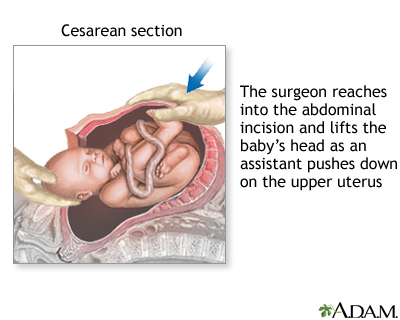Placenta Attached To C Section Scar

But in women who have had a previous c section the placenta can attach to old scar tissue where it can grow.
Placenta attached to c section scar. Placenta accreta is thought to be related to abnormalities in the lining of the uterus typically due to scarring after a c section or other uterine surgery. Abdulla al khan director of the division of fetal medicine and surgery at hackensack university medical center. These irregularities can result from scarring after a cesarean delivery or uterine surgery.
Although the cause of placenta accreta is not entirely clear some people believe placenta accreta is more likely if the patient has had previous cesarean deliveries possibly because the placenta may attach to the site of a c section scar where the uterine lining that would normally prevent placenta accreta has been compromised. These scars allow the placenta to grow too deeply into the uterine wall. The risk of your uterus tearing open along the scar line from a prior c section uterine rupture is also higher if you attempt a vbac.
Sometimes however placenta accreta occurs without a history of uterine surgery. The safety of labor with a placenta invading a cesarean section scar has never been evaluated and the risk of rupture and major hemorrhage may be higher in this situation. Pregnant women whose placenta.
In pregnancy the placenta normally fixes to the uterus wall and peels away after birth. The rule of thumb is if you have one c section and the placenta sits right on top of the scar the risk of placenta accreta is 25 percent said dr. Many factors can increase the risk of placenta accreta including.
In a rare occurrence a pregnant woman s gestational sac the small vessel that holds the developing embryo attached not to the lining of her womb but instead to a scar left over from a previous.


















